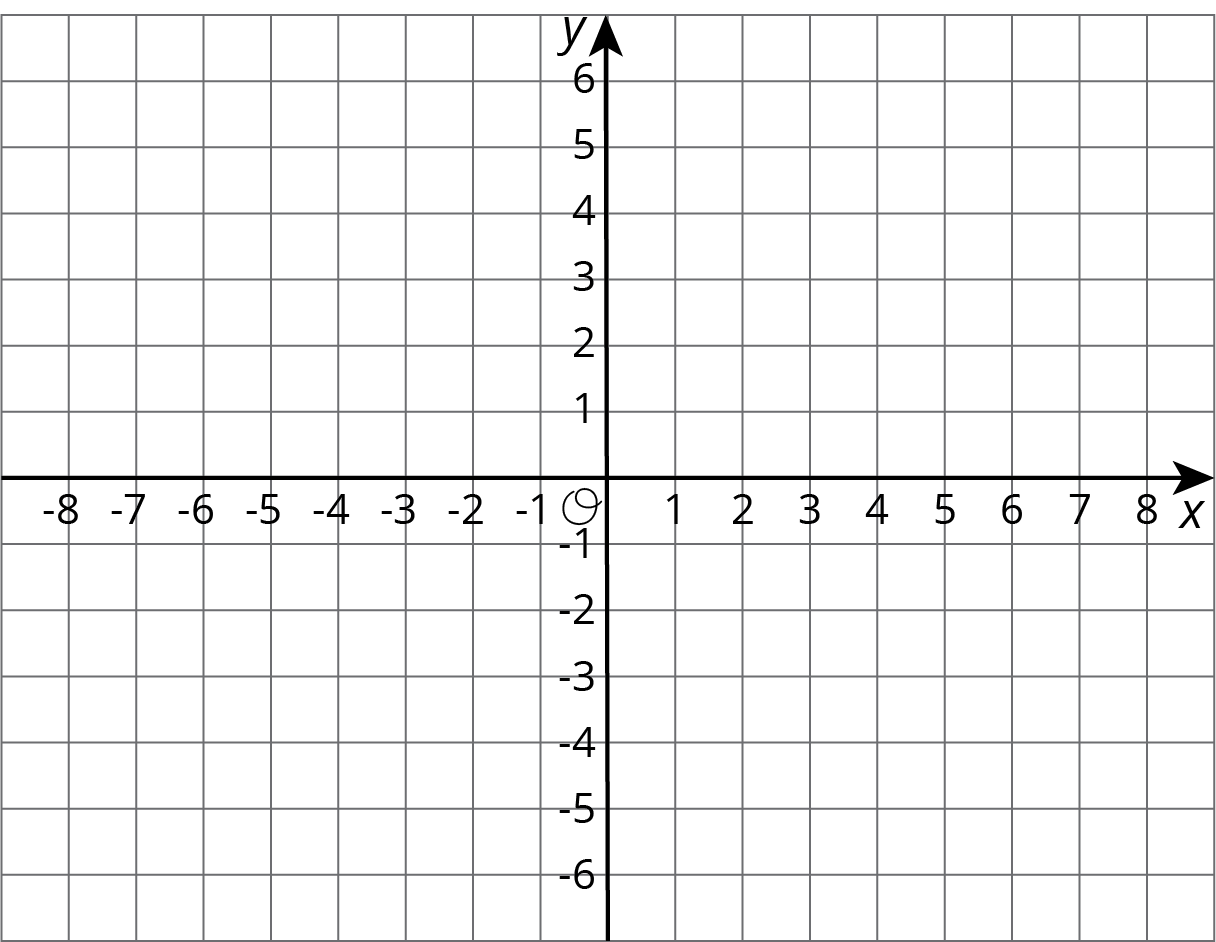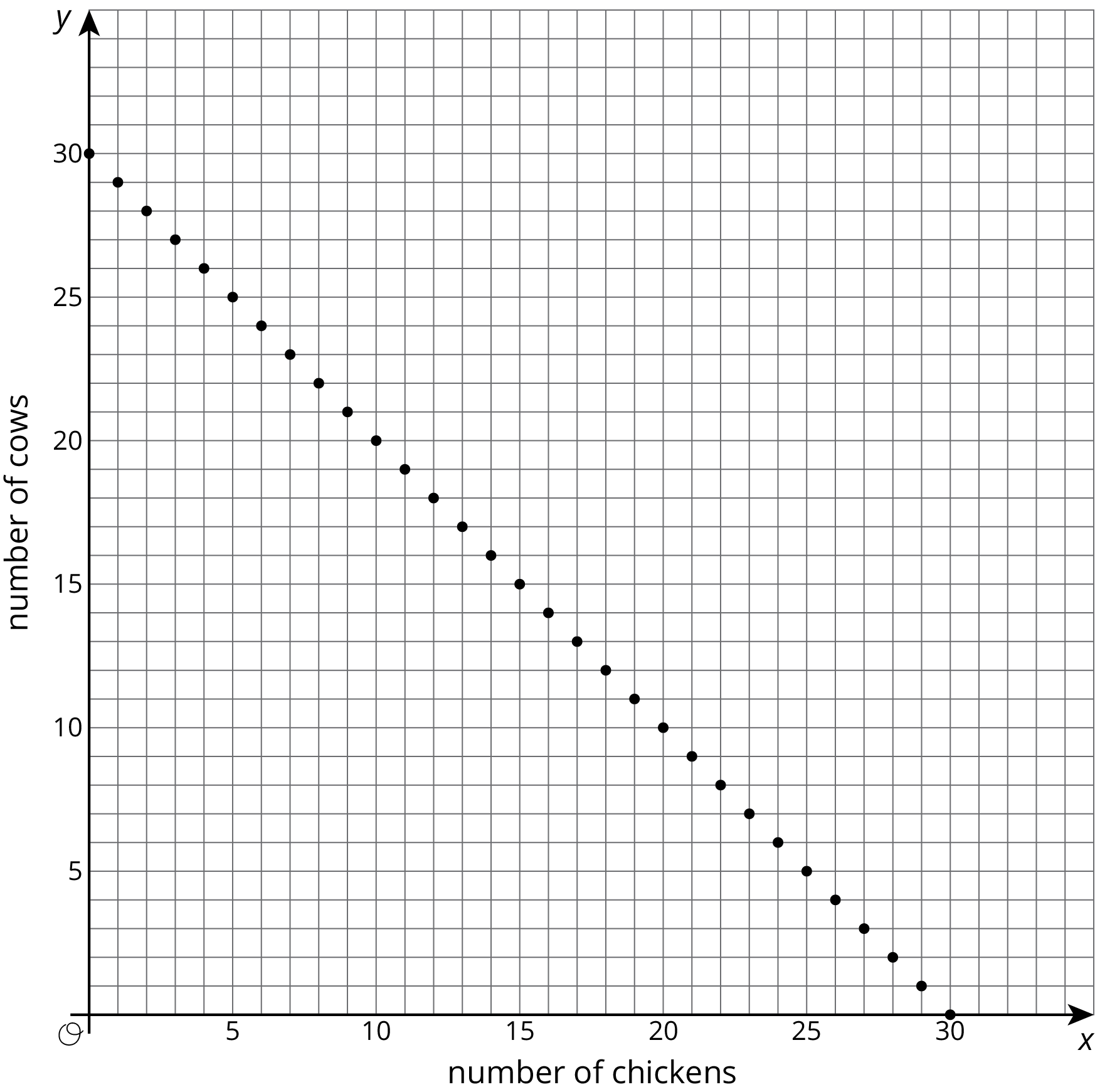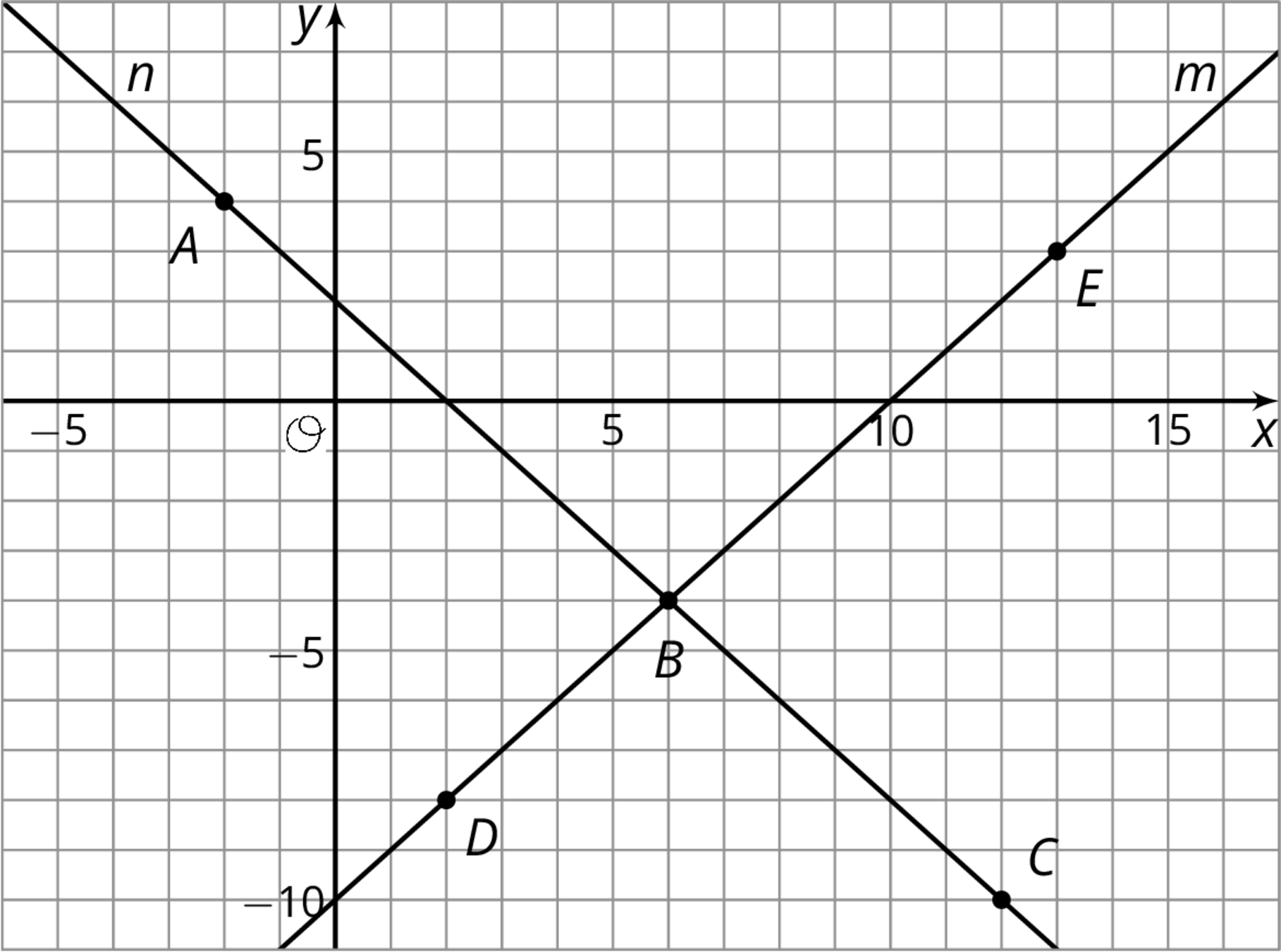Lesson 12
On Both of the Lines
Let’s use lines to think about situations.
Problem 1
Diego has $11 and begins saving $5 each week toward buying a new phone. At the same time that Diego begins saving, Lin has $60 and begins spending $2 per week on supplies for her art class. Is there a week when they have the same amount of money? How much do they have at that time?
Problem 2
Use a graph to find \(x\) and \(y\) values that make both \(y=\frac {\text{-}2}{3}x+3\) and \(y=2x-5\) true.

Problem 3
The point where the graphs of two equations intersect has \(y\)-coordinate 2. One equation is \(y=\text-3x+5\). Find the other equation if its graph has a slope of 1.
Problem 4
A farm has chickens and cows. All the cows have 4 legs and all the chickens have 2 legs. All together, there are 82 cow and chicken legs on the farm. Complete the table to show some possible combinations of chickens and cows to get 82 total legs.
| number of chickens (\(x\)) | number of cows (\(y\)) |
|---|---|
| 35 | |
| 7 | |
| 10 | |
| 19 | |
| 5 |
Here is a graph that shows possible combinations of chickens and cows that add up to 30 animals:

If the farm has 30 chickens and cows, and there are 82 chicken and cow legs all together, then how many chickens and how many cows could the farm have?
Problem 5
- Match the lines \(m\) and \(n\) to the statements they represent:

-
A set of points where the coordinates of each point have a sum of 2
-
A set of points where the \(y\)-coordinate of each point is 10 less than its \(x\)-coordinate
-
-
Match the labeled points on the graph to statements about their coordinates:
-
Two numbers with a sum of 2
-
Two numbers where the \(y\)-coordinate is 10 less than the \(x\)-coordinate
-
Two numbers with a sum of 2 and where the \(y\)-coordinate is 10 less than the \(x\)-coordinate
-
Problem 6
Here is an equation: \(4x-4=4x+\text{__}\). What could you write in the blank so the equation would be true for:
- No values of \(x\)
- All values of \(x\)
- One value of \(x\)